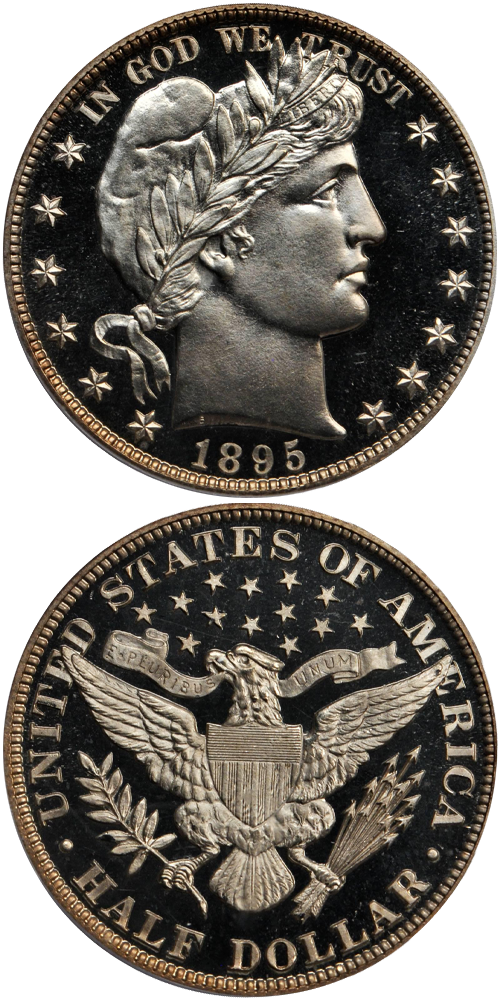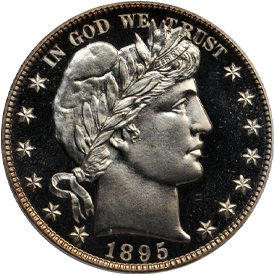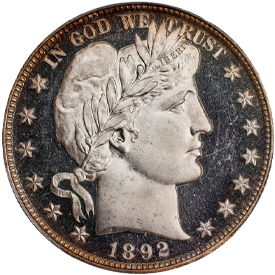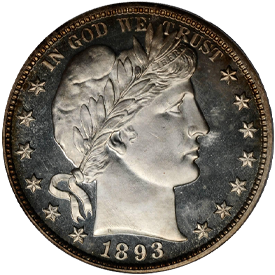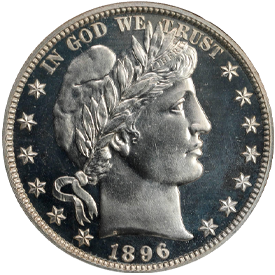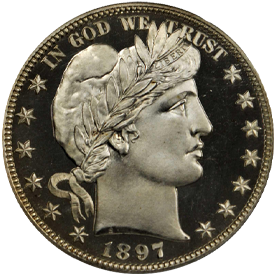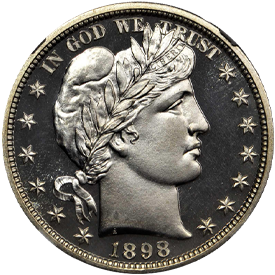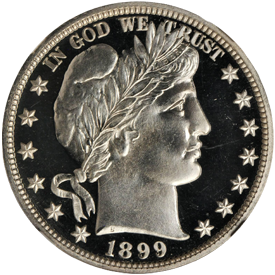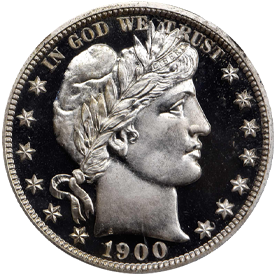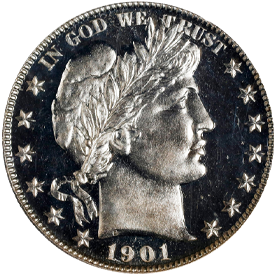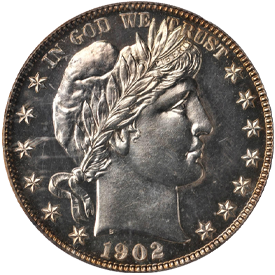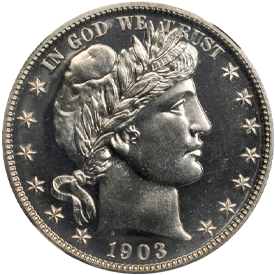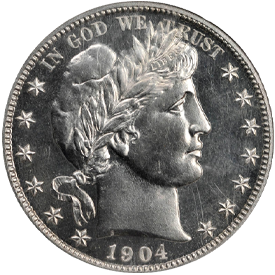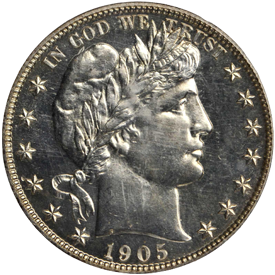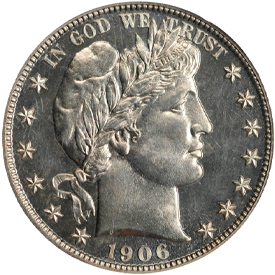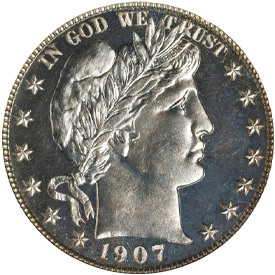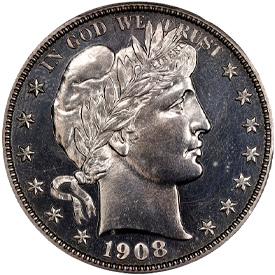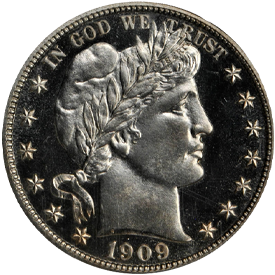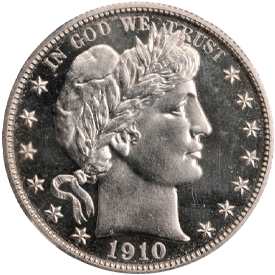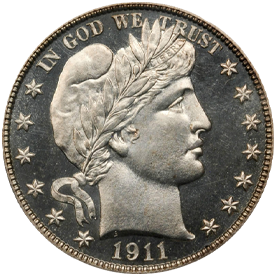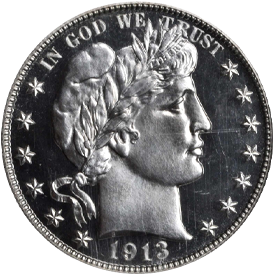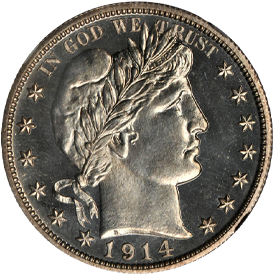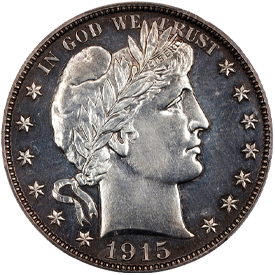Designed by: Charles E. Barber
Issue Dates: 1892-1915
Composition: 90% silver, 10% copper
Diameter: 30.6 mm
Weight: 12.50 grams (192.90 grains)
Edge: Reeded
Proof Mintage: 17,313
Barber Halves were struck in Proof in every year of their existence, from 1892 through 1915. Mint in the first year was the highest at 1,245, after which it settled into a range of 500 to 900 coins in most years. Only in the final two years (1914 and 1915) did the mintage drop off significantly. Proof Barber halves today are generally all valued about the same, regardless of the date.
The majority of Proof Barber halves fall into the “Choice” category, with PR-62, 63 and 64 being the most frequently seen certified grades and available on the market in the $1,000 to $2,000 range. Gem PR-65s and 66s are less common though still widely available in the $2,000 to $4,000 range. Superb Gem PR-67s and 68s are scarce to rare, and command prices of $5,000 and higher.
Cameo contrast is seen on about 16% of the certified examples, with both PCGS and NGC remarkably consistent in their Cameo allocation. Deep and Ultra Cameos are around 10X scarcer, comprising only about 1.5% to 2% of the total. After 1902, the Deep and Ultra Cameos virtually vanish, due to a change in the preparation of the Proof dies at the mint. Cameos are still occasionally seen, though not as often as in the 1890s. Prices for Cameos run anywhere from 50% to 100% above non-Cameo pieces.
As the largest of the three “Barber” coins, the Proof Half is an impressive piece, especially in high grade with cameo contrast.
